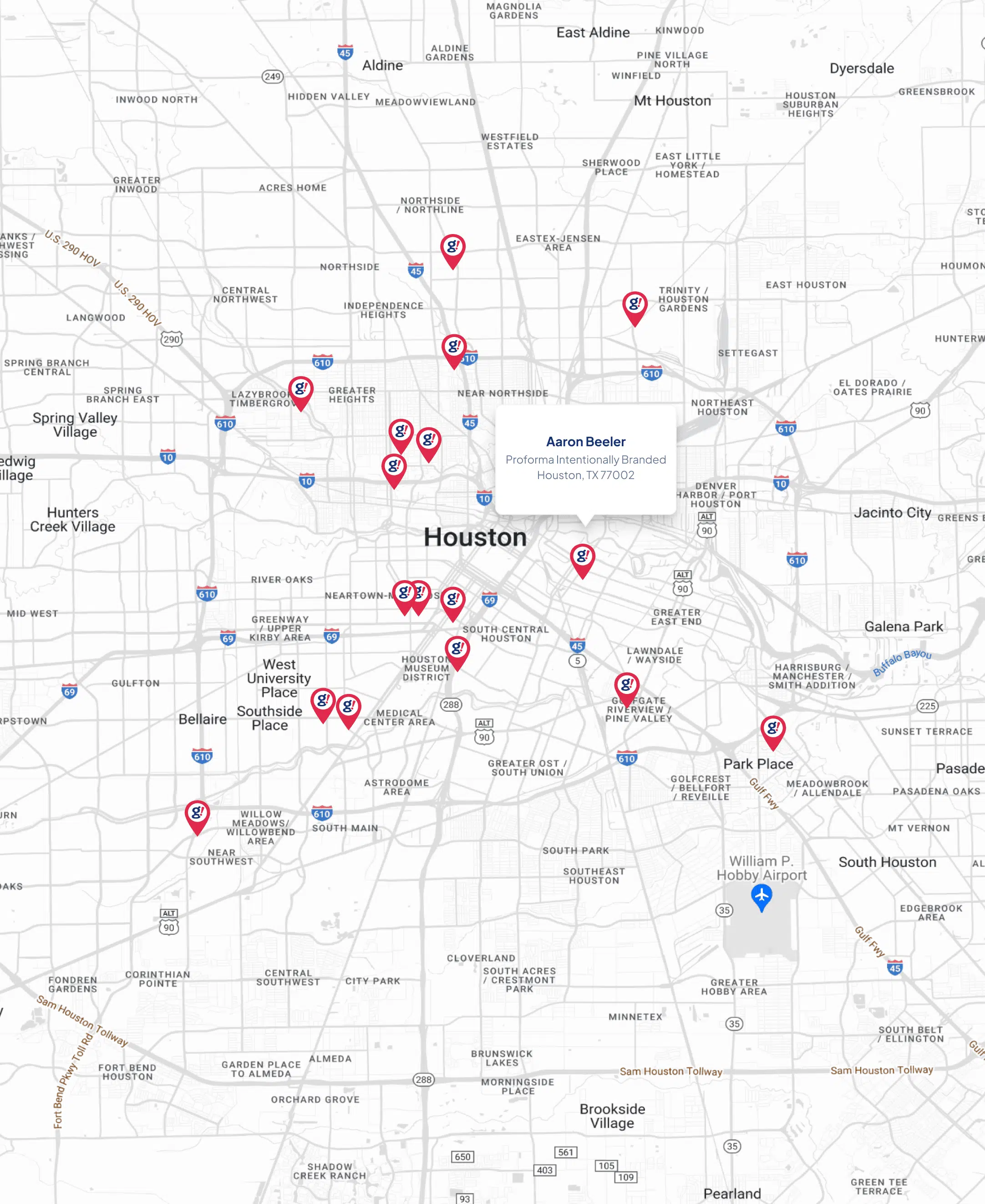Is Google Going to Remove the 3-Packs? What You Need to Know about Home Service Ads (HSAs) - Whitespark
- Updated on: 2017-08-25
- Read original article here

Is Google Going to Remove the 3-Packs? What You Need to Know about Home Service Ads (HSAs)
*The following is an excerpt from the Expert’s Guide to Local SEO :
Google started testing Home Service ads back in 2015 and this originally scared the entire Local SEO community (and business owners) because the test they did in San Francisco replaced the original 3-pack with a completely paid 3-pack. It stayed this way for 2 years but you can all sigh with relief because as of summer 2017, the regular 3-pack returned to the results.
There have been rumors flying around everywhere about if Google plans on making the 3-pack completely paid so I asked them. The current answer is no. They are showing ads in the 3-pack now on both desktop and mobile and they are rolling out Home Service Ads pretty rapidly but neither of these efforts are removing the traditional 3-pack or making the entire thing paid.
There are 5 pages showing more about how these ads work in the full version of the guide .
What Do Home Service Ads Do?
The current ad unit we see for HSAs started in November 2016 in San Diego. When you do a search for a locksmith or a plumber you get what looks like two 3-packs.
The First 3-Pack is the home service unit that contains all the listings that are participating in Home Service Ads & the listings for home-based service area businesses.
At the top of the list are the paid listings that are participating in Home Service Ads. They have “Google Guaranteed” on them and show up above the non-paid listings. Thus, it’s almost impossible to see a non-paid listing in the first 3-pack home service unit unless there were less than 3 paying businesses. When you click “more locksmiths” you get the full list and can see the paid ones at the top before you get the non-paid ones.
For the non-paid ones at the bottom, Google says that the listings rotate yet I can tell that location plays an important role. If the user searched San Diego the listings in San Diego seem to appear above the listings in suburbs.
Why is Google Screwing Over Home-Based Businesses?
So if you followed the breakdown of the 2 units you will realize that home-based service-area businesses without a storefront are:
Not at all in the traditional 3-pack
Only listed at the very bottom of the home service ad unit, below all the paying listings.
Clearly this is going to make a massive impact on those that were ranking really well in the 3-pack before Google removed them all. We are already seeing threads blowing up over at the forum from businesses who are wondering why their listings completely vanished from the search results. GMB phone support seems to be giving out fairly useless advice to these people. One person mentioned:
“I explained all this to Google support and they said to give it some time and see if it corrects itself in the next algorithm update.”
I cringed when I read that. No guys, this isn’t an algorithm update or a bug. It’s intentional and what will be happening in every market and industry that Google rolls out HSAs in.
I believe Google is doing this as the answer to the spam problem. It’s extremely easy for lead generating companies to set up fake listings using home addresses. Hiding the address also makes it harder for competitors to find and detect spam. The guide also shows 2 ways to see the address on a listing even if it’s been hidden. By only including listings with storefronts, they are eliminating a lot of the issues they have had with spam in the lifetime of Google Places/Google My Business.
When this first launched in San Diego, it cut the # of listings down by around 90% in comparison to what was there before the roll-out.
Here is a visual of before and after Google launched HSAs in San Diego.
TIP: You can easily see if a listing has hidden the address in Google My Business because the directions icon will be missing.
Who is This Currently Impacting?
Google hasn’t really updated their help center well so I’m including a list below of cities & industries this is in. If Google did not already reach out to you and you fall into the criteria listed, you can contact them about it here .
Los Angeles: Plumbers, locksmiths, HVAC, electricians, overhead door
San Diego: Plumbers, locksmiths, HVAC, electricians, overhead door, towing, auto glass
San Francisco Bay: Locksmiths, plumbers, house cleaners, handyman, general contractors, electricians, HVAC, painters, overhead door, auto glass repair, towing
Sacramento: Locksmiths, plumbers, HVAC, electricians, overhead door, towing, auto glass
Philadelphia: Plumbers, HVAC, electricians, locksmiths
Atlanta, Phoenix & Seattle: Plumbers, HVAC, electricians, locksmiths, overhead door
Businesses in suburbs of these cities are also included.
I’m a home-based SAB that has been impacted, what should I do?
I’m seeing lots of home-based SABs without storefronts that are simply unhiding their address. Yes, this does work and it does get you instantly back in the list. However, this is not a long-term solution. Doing this is putting your listing at risk of being completely removed from Maps and historically Google has never been overly gracious when it comes to hard suspensions for service area businesses. All it would take is for one of your competitors to report you to accomplish this.
In addition to focusing on AdWords & Organic (both which drive a ton of traffic), a business owner pretty much has to get an office to qualify to show the address. Although throwing up a sign on your front lawn does confirm your business is at that address, it is not enough to qualify as a storefront. In order to unhide your address, your location needs to be staffed during your stated hours and customers have to be able to drive up and get service during those hours. If you rent a cheap office and keep it locked all day, this also doesn’t qualify because no one is at the address.
Keep in mind that if you show your hours currently as 24-7 you would not be able to do this as a storefront unless you are staffed 24-7 (like Walmart).
I’m an SAB with a storefront, what should I do?
It’s time to party – Google just eliminated about 80-90% of your competitors. That being said, I would strongly recommend monitoring the local results closely to make sure every listing there (especially the ones outranking you) are eligible. Google’s sweep of removing home-based SABs is not perfect. I see plenty of home-based businesses who are showing their addresses or listings using PO Boxes as addresses. Getting these listings removed is in your better interest since it results in an immediate impact on your own ranking. This month, I added 3 pages in the full version of the guide that gives you a detailed look at what you need to do to get these listings removed.
In Summary
If you’re reading this and feel irritated about this change, you are not alone. Unfortunately this is a reminder that when it comes to Google it is really their world and their rules and changes they feel are best for their users (and themselves, let’s be honest) can have unintended extreme impacts on the small business owners relying on them for traffic.
The Expert’s Guide to Local SEO Is the Ultimate Local Search Resource
The Expert’s Guide to Local SEO is the ideal handbook for anyone who wants to advance their Local SEO and Google My Business knowledge, and strengthen their troubleshooting skills.
This guide was created by one of local search’s top contributors and practitioners, Joy Hawkins of Sterling Sky. Joy has a knack for identifying, researching, and solving GMB ranking issues. She is regularly featured in our monthly newsletter, has helped business owners understand, Why Google Removed Reviews from their listing , and has shared the Best Practices for Practitioner Listings on Google My Business (GMB) .
What better way to learn local SEO than from the best? If you’re struggling with local search, Joy is the consultant who can get you on the right track.
What You Can Expect From The Guide
This manual is loaded with information, how-to’s, and step-by-step instructions. Here are just some of the topics you will see in this 190+ page resource:
A scenario where it’s actually a bad idea to report your competitor’s duplicate listing.
Want to know how many 5-star reviews you need to increase your average rating on Google or Yelp? Here is a way to tell.
How to deal with listings for practitioners who no longer work for your business.
What rules in the Google My Business guidelines are actually enforced and what you stand to lose by breaking them.
How to get your edits to listings on Google Maps approved faster.
How to deal with the different types of suspensions that happen in Google My Business.
Why using the address USPS suggests is a bad idea.
Everything you need to know about the local filter:
How does it work?
What do you do if you got filtered?
How can you find a list of potential threats who could cause you to be filtered?
What strategies to use to get more Yelp reviews.
How Yelp deals with duplicate & practitioner listings and how it varies from Google.
How should a small business organize their website?
When it is a good idea to invest in blogging, and when it’s not.
When it’s a good idea for a small business to have multiple websites.
Tips for optimizing YouTube videos.
When a NAP discrepancy is worth fixing and when you can ignore it.
7 Ways to show ROI to a small business owner who is paying for Local SEO.
Get Your Copy of The Expert’s Guide to Local SEO
Use our exclusive coupon code: WHITESPARK15 (valid until midnight on September 7, 2017)and save $224 on your purchase of this manual (retails at $1,499 USD).
PURCHASE THE GUIDE
This Guide is Like Having Joy on Speed Dial
This guide will serve as your in-house expert for local search advice . It’s like having Joy on call to answer any question you might have about troubleshooting and optimizing your Google listings, website, reviews, and more. Just search the 190 page guide and find your answer in an instant. If you’re a marketing agency with only basic local search knowledge, you can immediately level up to expert with this guide. It’s worth every penny.
Ideal For:
Agencies who are training new employees in Local SEO.
Consultants who want to stay up-to-date on tactics or who are new to local search.
Small business owners who manage all their online marketing in-house.



